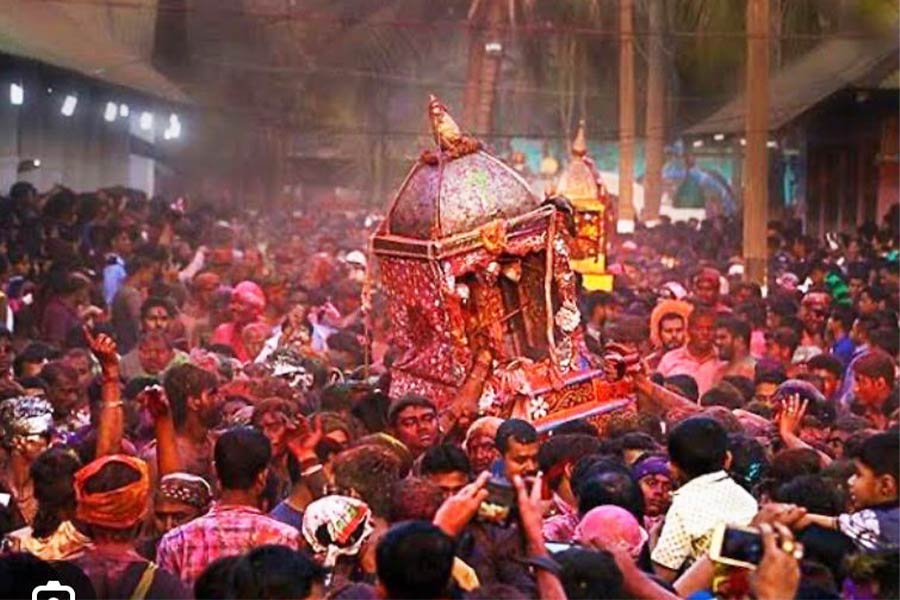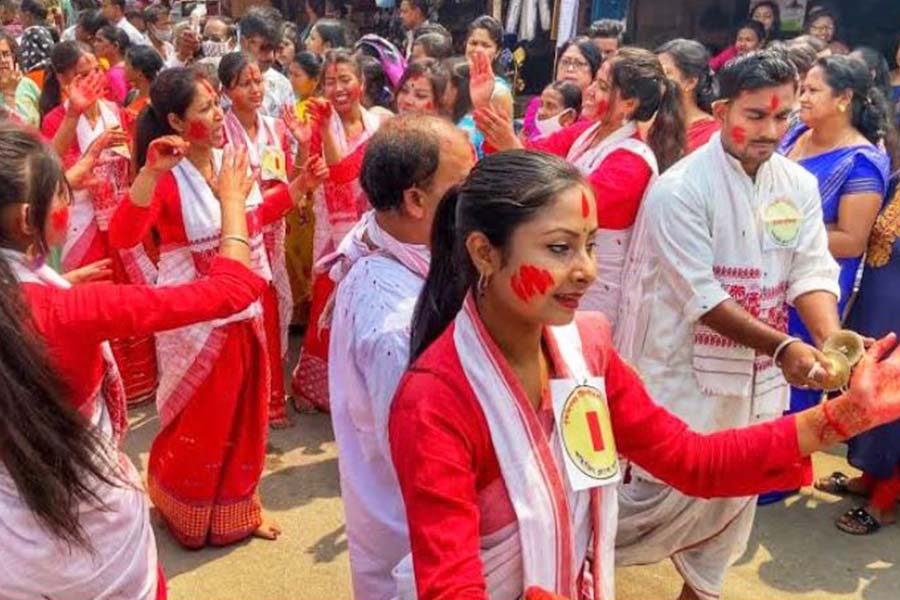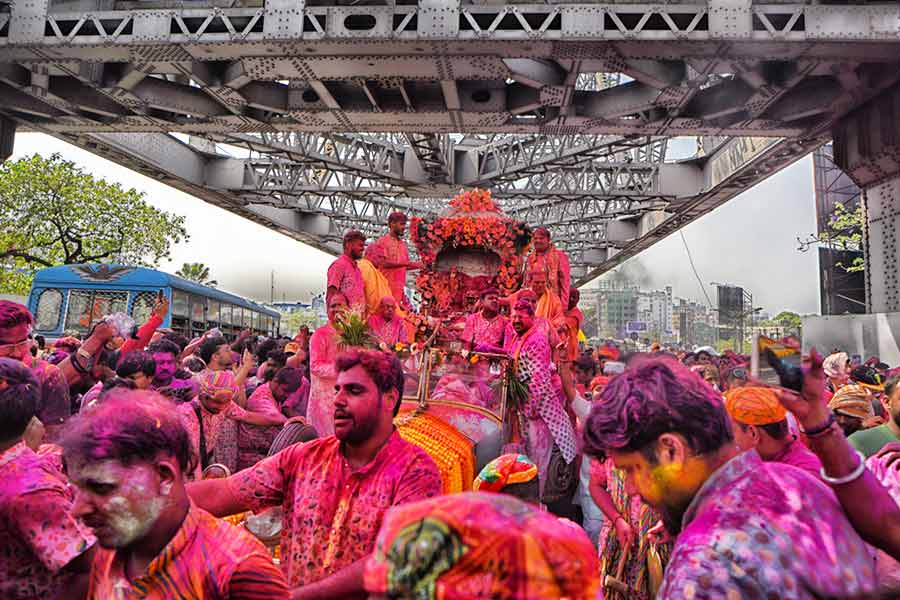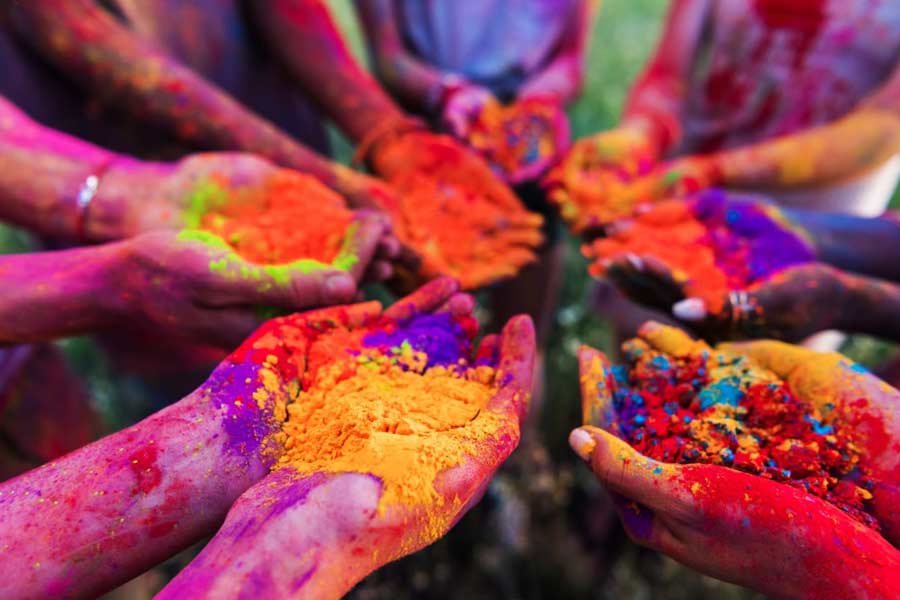The beauty of India is that there is no one way to celebrate anything — even Holi. The festival of colours brings with it a unique joy to people across cultures, with everyone following different traditions. My Kolkata spoke to a variety of people from different communities in Kolkata about how they like to enjoy this time of the year.
Holi is a particularly celebratory time in the Kolkata Marwari calendar. The Bagla family of Burrabazar, who have roots in Rajasthani royalty, are known to have pioneered this tradition of ‘Barsane waali Holi’ almost a century ago. When they moved to Kolkata, they brought that tradition here too, with a slight twist.
“There are two temples of Lord Satyanarayan, one in Burrabazar and the other in Howrah. On the day of Dashami, Lord Satyanarayan goes from Burrabazar to Howrah, with the Bagla’s vintage Rolls-Royce being decked up as his holy chariot. He stays there for five days, returning on the same vehicle with a grand procession. People have now trended the term, ‘Rolls-Royce waali Holi,” explains Swastik Upadhyay, an active member of the celebrations each year. Legend goes that the patriarch of the Bagla family purchased the car from novelist Rudyard Kipling!
While the procession to Howrah was on March 19, the return to Burrabazar was on the 23rd. Devotees playing Holi with the almighty at the scenic Howrah Bridge, while following a decked up Rolls-Royce was a sight worth seeing. “The real Holi isn’t what you play with your friends and family, but with god. In Bikaner, they play Holi with Lord Satyanarayan for 30 days. The tradition is followed in some temples in Kolkata too,” adds Upadhyay. The yatra has people playing daflis and singing kirtans. It is such a beautiful atmosphere that some people play dandiya too. “The lanes go red with colour. There is such a huge celebration in Kolkata, but people don’t even know about it. You simply haven’t played Holi, till you have been here,” he grins.
Holika Dahan is another important celebration for the people of Rajasthan, and its neighbouring state, Gujarat. “Most parks and open-air community spaces in Kolkata host the ritual on the night before Holi, where pyres are burnt to symbolise how Holika was immolated when she tried to take the life of her nephew, Prahlada. People do a parikrama of the fire, and feed it coconuts and puffed jowar. It also becomes a place for the community to convene and play with gulal,” explains Seema Sanghvi, a homemaker. Apart from sweets, thandai is a signature part of this event. “Holi signals the end of spring and the onset of summer. Thandai cools the stomach with ingredients like rose petals, fennel, and pumpkin seeds,” she adds.

A Holika Dahan celebration around a bonfire
iStockSanghvi also happens to be a Jain, and adds that Holi is perceived very differently in Jainism, where water is considered sacred and people are asked not to waste it. “The 13th day of Falgun month, which typically falls a few days before Holi, is the day of the Shatrunjay Yatra, where people go on pilgrimage to the mountains to attain salvation,” Sanghvi added.
For Sikhs, the second day of the lunar month of Chett usually coincides with the festival Hola Mohalla. The festival generally commences a day after Holi, occasionally coinciding with it. This year, it will be held from March 25 to 27. “While Kolkata’s Gurudwaras generally host saints and serve langar during this time, it is a huge three-day festival in Punjab,” says Ruby Singh, an academician.
Established by Guru Gobind Singh Ji, the festival began with the idea of forging a spirit of community and brotherhood. A lot of emphasis is laid on remembering legendary Sikh warriors. Apart from this, devotees also listen to kirtans, music and poetry. Like most Sikh festivals, Gurudwaras serve langar to everyone on Hola Mohalla, regardless of their faith.

The Assamese community gathers at Barpeta Satra for the Dol Jatra every year
For the Assamese community, Holi is synonymous with Dol Jatra, with devotional songs dedicated to the union of Radha and Krishna. The 15th-century scholar Srimanta Sankardev pioneered the Dol Utsav (also known as Deul) at Bordowa Satra in Assam. Five centuries ago, Sankardev’s disciple Mathura Das began a grand celebration at Barpeta Satra. Today, it has grown into a five-day fiesta, with the Assamese diaspora from around the world congregating there to celebrate. “During the Dol Jatra, there is a different theme of celebration on each day. There are kirtans, bhajans and processions, apart from performances during both the day, and at night. People also play with colours made of flowers. It is such a frenzy that many Assamese people from the city travel to Barpeta Satra at this time of the year,” says Mitali Saikia, an educator.

Another scene from Barpeta Satra, Assam
The Vaishnavites based in Kolkata also have certain rituals associated with Dol. Assam Bhavan had a pre-Holi celebration on March 8, clubbed with Women’s Day. “The Kolkata Assamese Women's Welfare Association blended the two days together, felicitating prominent Assamese women from the city, and playing with some abir,” she added.
While the south of India doesn’t traditionally celebrate Holi as largely as the north, the spirit of Kolkata makes it a colourful day for south Indian communities too. Krishna P. Nair, the general secretary of the Keraleeya Mahila Samaj Kolkata and a convenor of Calcutta Malayalee Association admits that people from the state don’t have any religious attachment to the day, but revel in playing with colours. “We have only started celebrating Holi after coming to Kolkata, so it’s been adapted into our lives. Holi is a holiday for everyone, so families visit each other with colours, and since the Malayali community largely lives in Behala, the ladies often gather at a friend’s terrace.”
Similarly, the Parsi community see it as a way to unwind with friends, and connect with loved ones. “For Parsis, food is intrinsically linked to celebration. My foodie friends and I generally go for brunch every Holi. It’s such a lovely and joyous occasion,” beamed Rukshana Kapadia.
In a country like India, there are many diverse ways to celebrate Holi. How are you doing it?








